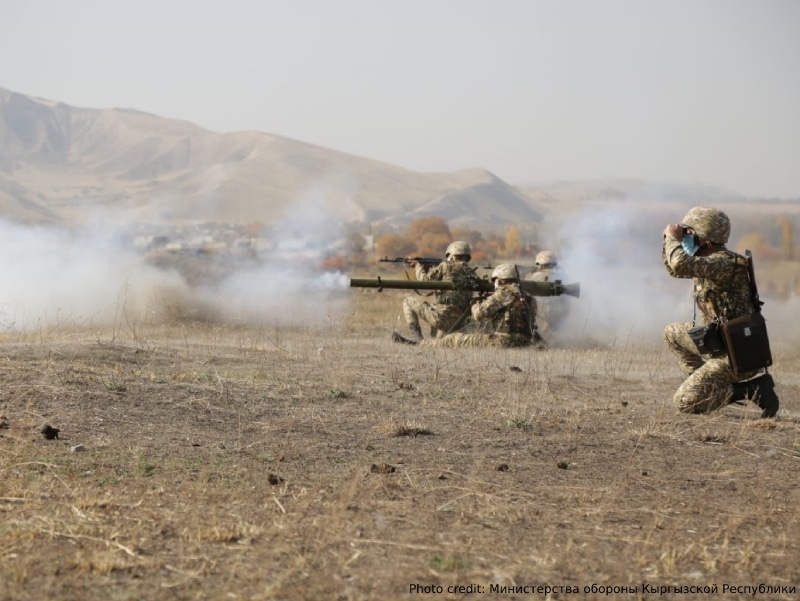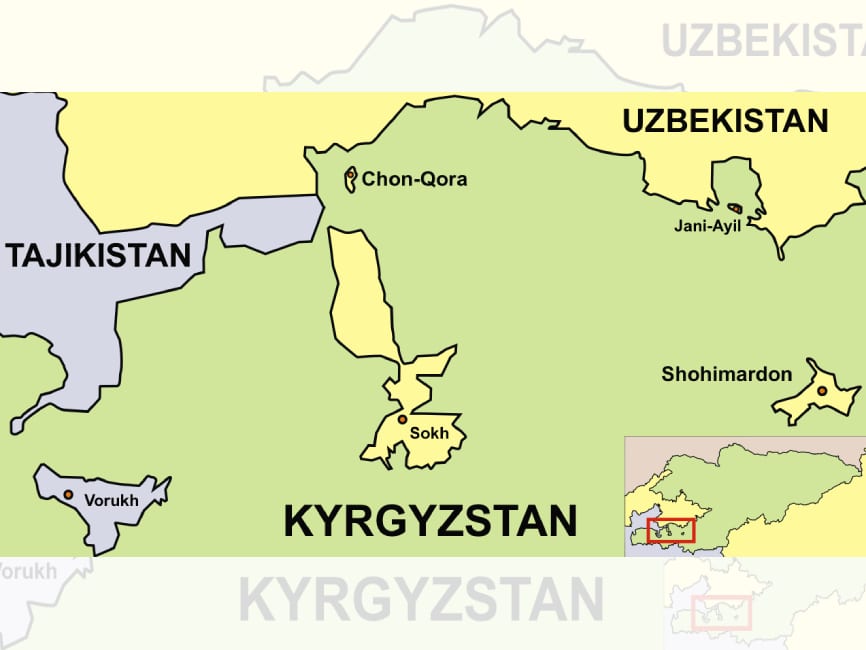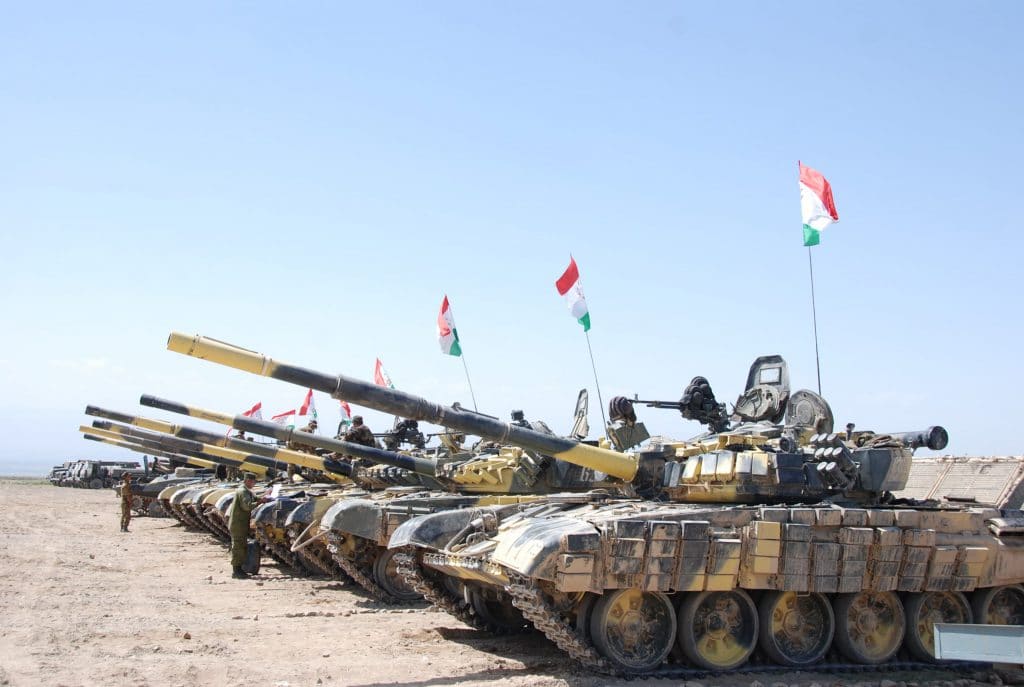
Verzija teksta na srpskom jeziku autora Lazara Baltića dostupna je na sledećem linku: Tekst na srpskom jeziku
As a direct consequence of the lack of natural resources, 21st-century conflicts and disputes are becoming an increasingly frequent means of solving political, economic and social problems. The area where Kyrgyzstan and Tajikistan are located has been the subject of such a dispute for years. The former members of the Soviet Union have since its disintegration led numerous conflicts along the borders of the former state in order to secure the elementary means of living. The war that arose between Kyrgyzstan and Tajikistan in April 2021 is just one of the indicators of the severity of the abovementioned problem and the inability of the states to reach an adequate solution.
The Soviet Union’s disintegration left behind a plethora of unresolved issues and problems its former member states face to this day. An inadequate division of territories and undefined borders have contributed to a large number of conflicts, especially in Central Asia, that is, in the region of Kyrgyzstan and Tajikistan. This problem stems primarily from the fact that USSR borders were mostly symbolic, so its disintegration led to many disputes over the division of land, canals and the rest of the infrastructure that plays a crucial role in the life of a population.
Since 1991, the Cold War, the arms race and nuclear problems have become a thing of the past for the Central Asian states. Since then, Kyrgyzstan and Tajikistan have initiated a different form of conflict aimed at securing territory, pastures for grazing animals, water and other resources necessary for the survival of villages and towns located near the borders of the two countries. Additionally, the political and social tensions that existed even before the collapse of the USSR are still present in this area. Based on long-term indicators, it is clear that disputed borders, scarcity of natural resources, economic underdevelopment and unsatisfied human needs are the key factors that have contributed to the destabilisation of this region for more than 30 years.
Borders
Border disputes also heavily contribute to the instability and intolerance between Kyrgyzstan and Tajikistan. Out of 971 kilometres of the border separating the two countries, over 400 kilometres are not demarcated; that is, the line of division cannot be precisely determined. The existence of a dividing line would substantially contribute to the reduction of tension and conflicts in this area. The impossibility of consensus regarding the border division stems both from the fact that in the Soviet Union, they did not play a significant role in the distribution of territories and the fact that the two republics utilise different geopolitical maps. On the one hand, the Kyrgyzstan government in Bishkek believes that the 1958/1959 geopolitical map is adequate, while on the other hand, the Tajikistan government in Dushanbe uses much older maps, dating from 1924 to 1939. For this reason, many non-demarcated borders serve and are used for drug trafficking and illegal transportation of various goods, which otherwise would not pass border control.
However, in the last few years, there has been a trend of moving the existing physical border crossings on both sides. This movement is done primarily at night and by a few feet to gain territorial advantage. Due to the pervasive mistrust in this area, even the simplest road and facility repairs can seem like an attempt to harm the other party.
Fergana Valley
The Fergana Valley has, however, been a subject of dispute since the abovementioned 1991. It is a large plain diamond-shaped valley that stretches through the very centre of Central Asia across southern Kyrgyzstan, northern Tajikistan and eastern Uzbekistan. The valley is surrounded by the Kuramin, Chatkal, Fergana, Alay and Turkestan mountain ranges and defined by the Syr Darya river basin. The main characteristic of this 22,000 square kilometre valley is its great agricultural fertility. It offers opportunities for growing cotton, rice, wheat, fruit and vegetables and, as the most densely populated part of Central Asia, it is the site of numerous conflicts and unrest that occur virtually every year. It is important to point out that everything happening in this area explicitly affects not only economic problems but also the political and religious spheres in all three countries.
Water and pastures
Irrigation systems and infrastructure have been one of the main causes of conflict between Kyrgyzstan and Tajikistan for many years. These issues, like most others, arise from the fact that the entire infrastructure used for irrigation was jointly owned. At the time, many irrigation systems were intertwined and crossed administrative borders, later further complicating an already unfavourable situation.
On the other hand, problems with water and irrigation are closely related to the redistribution of grazing pastures, also influenced by the disintegration of the USSR and ensuing developments. Unlike the Tajiks, who mostly kept a small number of cattle and poultry mainly for their personal needs, the Kyrgyz people, as nomads, engaged in animal husbandry, which still represents their primary source of income.
Furthermore, during the Soviet Union both Kyrgyzstan and Tajikistan owned collective farms (kolkhozy), as well as state farms (sovkhozy). In that period, there was a lot of pressure from the state to always keep such estates functional and well-equipped to achieve the desired productivity. However, the division of territories and the demarcation of borders also led to conflicts over existing farms and their redistribution. Aiming to survive and recover, a multitude of countries, including Kyrgyzstan and Tajikistan, launched the initiative to create new farms, which, among other things, also required greater water consumption. In Central Asia, that was a big blow for Bishkek and Dushanbe, considering the aforementioned water and irrigation problems, as well as the fact that the two countries share only 40 irrigation canals, most of which are not fully functional. Many water pumps have not been used for years, both due to malfunctions and the infrastructure that is increasingly deteriorating by the year.
Many experts, however, assert that the abovementioned problems cannot be attributed solely to defects and malfunctions of the channels. Both in Kyrgyzstan and Tajikistan, the desire to repair and restore these systems is insufficient, resulting in the dissatisfaction of a vast number of residents. The money needed to rebuild and provide a stable water source for both countries is being invested in other sectors, lately chiefly in the military. For this reason, experts believe that the water issue is only a trigger for conflict. The lack of initiative threatens the survival of both countries, among the poorest in Central Asia.
Conflicts between Kyrgyzstan and Tajikistan occur virtually every year, and those from 2004, 2014 and 2021 can be singled out as the most important ones. Over the past years, more than 70 incidents have been recorded, which have had numerous consequences on the population living near the borders. Batken and Isfara regions are most affected by such conflicts, whilst the two Kyrgyz enclaves of Vorukh and Western Qalacha are also the sites of continuous unrest between Kyrgyz and Tajiks.

During the abovementioned years, conflicts were manifested in different forms. The Apricot War of 2004 came as the result of Tajik farmers planting trees in the disputed territory. In response to such an action, the Kyrgyz cut down new trees, resulting in discord between the two sides. During the unrest, garden tools and stones were used, which was typical for the conflicts between Kyrgyzstan and Tajikistan in that period. However, in 2014, there was a turning point in how such conflicts were conducted. During that year’s Ketmen War, firearms were used for the first time, in contrast to the previous method of combat. As a result, 5 Kyrgyz and 3 Tajik soldiers were killed.
In the following period, the increasing militarisation of borders and strengthening of security at crossings became an integral part of the foreign policy of both countries. Since then, Bishkek and Dushanbe have sought to strengthen their forces, both through the acquisition of weapons and the request for international assistance from major political powers. This is supported by the fact that both countries asked the Russian Federation for help, on whom they rely the most when it comes to security and safety in the region. However, it seems that Russia does not look at the former members of the USSR as equal partners. The increase in the number of Russian troops and the amount of military equipment along Ukraine’s border, as well as the war between Armenia and Azerbaijan, have shown that Moscow is using the existing conflicts in the former Soviet region to fulfil its own interests.
It seems that Tajikistan has enjoyed substantial support from Moscow in the last few months, the peak of their military cooperation being the joint military exercises in which members of the Uzbekistan Armed Forces, in addition to Tajiks and Russians, also participated. The exercises began in the first week of August and took place at the Harb-Maidon military training ground in Tajikistan. Nonetheless, it should be noted that the Russian Armed Forces have been present in this Asian country for decades. Today, troops numbering about 7,000 soldiers are stationed in the 201st military base (named in 2004), the successor of the site that has housed various Soviet divisions since 1941.
The lack of Russian support on the battlefield could nevertheless be seen during the most recent disputes, when a three-day war was waged between these two countries – from April 28 to May 1, 2021. The war was instigated by a dispute over a water intake station on the Kyrgyz-Tajik border, near the village of Kök-Tash in Batken province, when the Kyrgyzstan side initiated construction work in the vicinity of the station. But pressure, tension and mistrust have led to an attempt by Tajikistan to install surveillance cameras near the station so as to have an insight into the activities of its biggest rival. However, this act led to a tightening of relations and the outbreak of war on April 28, 2021. Unlike in previous conflicts, numerous weapons were used in this three-day war, primarily: armoured vehicles, military helicopters, mortars, and other heavy military equipment. The areas most affected by this conflict (although not the only ones) were the villages of Maksat, Leilek, Kulundu and Khoja-Alo.
Despite efforts to come to a quick solution, the consequences of this war were too dire. 36 Kyrgyz and 19 Tajiks died in combat, and over 180 people were injured. In addition, thousands of people were forced to move from their territories in order to avoid being caught up in the war, which would otherwise have claimed even more lives. Most evacuated civilians lived in towns and villages near the borders, that is, near disputed territories where fighting was the fiercest.
The April war has nonetheless shown that Tajikistan has a better equipped and tactically superior army. Even though the conflict was destructive for both sides, Tajikistan claimed a decisive victory that sparked a number of issues regarding the acquisition and purchase of weapons. In the last few years, the Kyrgyzstan side has, on several occasions, accused and speculated that Tajikistan enjoys support from external factors and is using this support to fight Kyrgyzstan.

However, although both countries are among the poorest in Central Asia according to 2017 claims, the Head of the Main Directorate for International Military Cooperation of the Russian Ministry of Defence, General Alexandr Kshimovsky, stated that in 2017 Russia supplied Tajikistan with weapons and military equipment worth almost 122 million dollars. Among the exported weaponry and equipment were T-72B1 tanks, BTR-80 and BTR-70 armoured personnel carriers, BMP-2 infantry fighting vehicles, Mi-24 and Mi-8 helicopters, howitzers type D-30, air defence systems, geodetic surveying equipment, spare parts for armoured vehicles, communication equipment, logistics support equipment and means, and a vast number of light weaponry. In the same period, Kyrgyzstan allocated only 5 million dollars for equipping its armed forces, while receiving from Russia as support, among other things, 2 Mi-8MT helicopters, a P-18 radar station and nine modernized BRDM-2M armoured reconnaissance vehicles.
And while pressure in the region is palpable, it seems that a desire to find a political compromise exists. In an attempt to strike a solution, on May 1, 2021, the Heads of the State Committees for National Security of Kyrgyzstan and Tajikistan, Kamchybek Tashiev and Saimumin Yatimov, agreed to completely cease military fire on the border between the two countries. Despite these efforts, just a month later, a new dispute almost broke out; however, such a scenario was avoided.
In addition to everything mentioned, it is vital to point out that the long-standing conflict between these two countries cannot be explained only as a battle for resources and territory. In the 21st century, water, land and borders are used mainly as triggers for more serious conflicts. The politics propagated by the two countries, the constant militarisation of the borders and the troop build-up in certain areas often cause greater friction than the lack of water. The coronavirus pandemic further exacerbated the process of leading peaceful and constructive talks and creating functional agreements, given that both countries are struggling with a lack of money and resources to fight the virus.
In order to achieve a permanent solution, it is necessary to invest in the restoration and reconstruction of the existing common infrastructure, as well as to resolve the issue of borders which have not yet been fully demarcated and defined, even after several decades. Taking into account all present problems, if an agreement on water and land is not reached, a new conflict is more than inevitable.
Translated and proofread by: Milica Milosavljević
Author: Lazar Baltic


